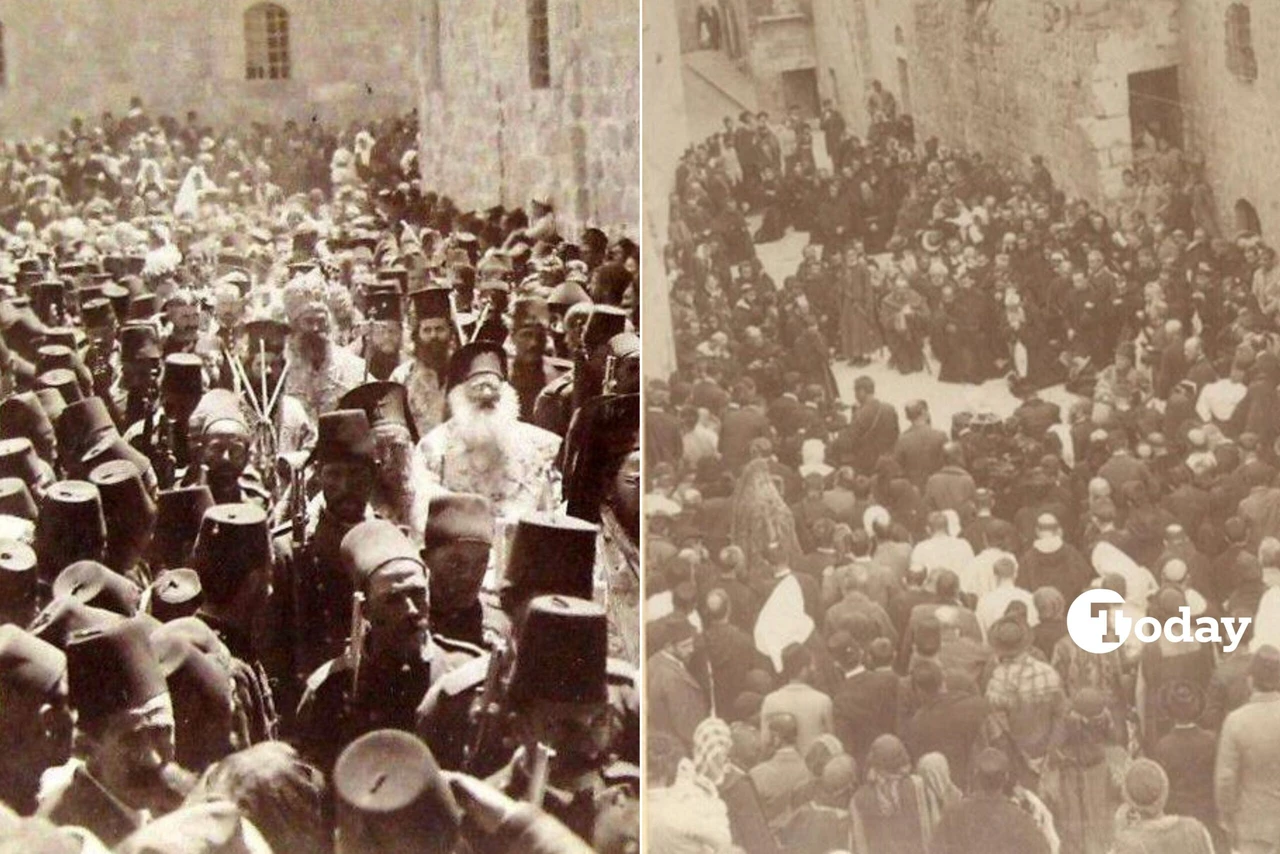Mysterious saint of Türkiye: Saint Thecla and her miraculous escape
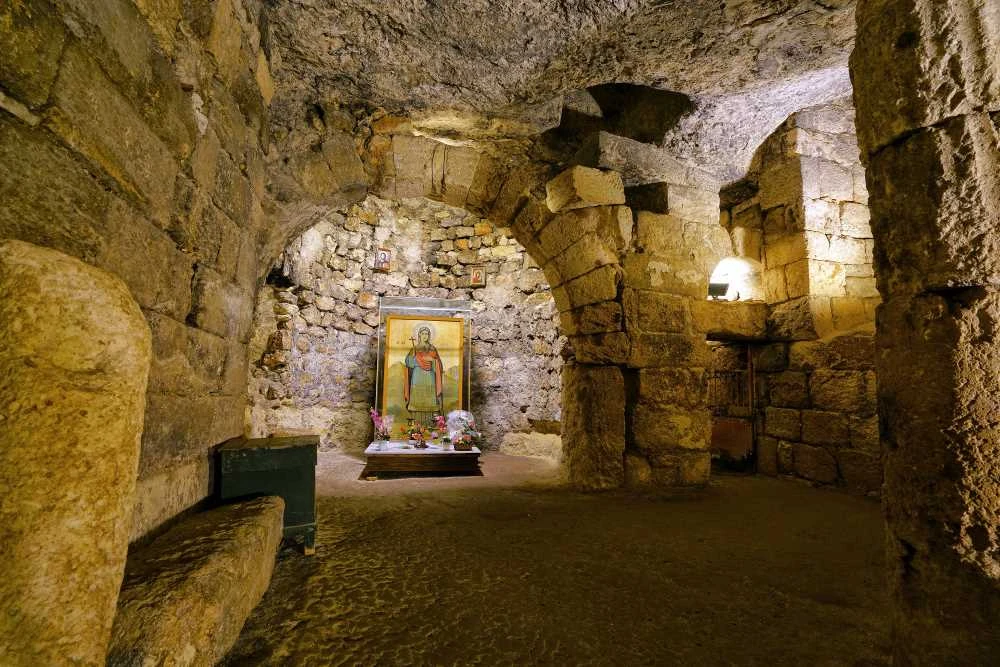 Church of St. Thecla (Aya Tekla), Silifke, Mersin, Türkiye, November 5, 2018 (Photo via Gulcan Acar)
Church of St. Thecla (Aya Tekla), Silifke, Mersin, Türkiye, November 5, 2018 (Photo via Gulcan Acar)
Christianity’s roots in the Anatolia trace back to the arrival of Saint Thecla of Iconium (modern-day Konya), one of the most significant figures in early Christian history. Born in the 1st century A.D., Saint Thecla was a devout follower of the Apostle Paul, whom she met at the age of 17 after being deeply moved by his sermons in Isparta’s Yalvac. Despite the dangers posed by her newfound faith, she remained steadfast in her beliefs, becoming one of Paul’s closest disciples and a key figure in spreading Christianity across Asia Minor.
After accompanying Paul on his mission trips, Thecla faced persecution but escaped death on multiple occasions through what are believed to be divine miracles. One of the most notable moments in her life occurred when she fled to Seleucia, where she found refuge in a cave—now the site of the Aya Tekla (Saint Thecla) Cave Church. Legend holds that as her enemies (Roman legion) closed in to execute her, she miraculously disappeared into a crevice within the cave, evading capture and continuing her work in secret.

Saint Thecla’s miraculous legacy
The cave where Thecla is said to have vanished became a sacred site for early Christians. It served as a hidden place of worship until Christianity was officially recognized by the Roman Empire in 313 A.D. In the 4th century, the cave was transformed into a church, known today as the Aya Tekla Cave Church, and the site quickly grew into a major Christian pilgrimage center. Thecla’s life and the miracles associated with her have made her one of the most revered figures in the history of the faith, with her legacy extending far beyond her time.
Egeria, a pilgrim from the 4th century, documented her visit to Thecla’s church in her travel diary, describing it as a place filled with small rooms for priests and nuns to live and worship. Her writings serve as one of the earliest records of this sacred site and its significance in Christian pilgrimage.
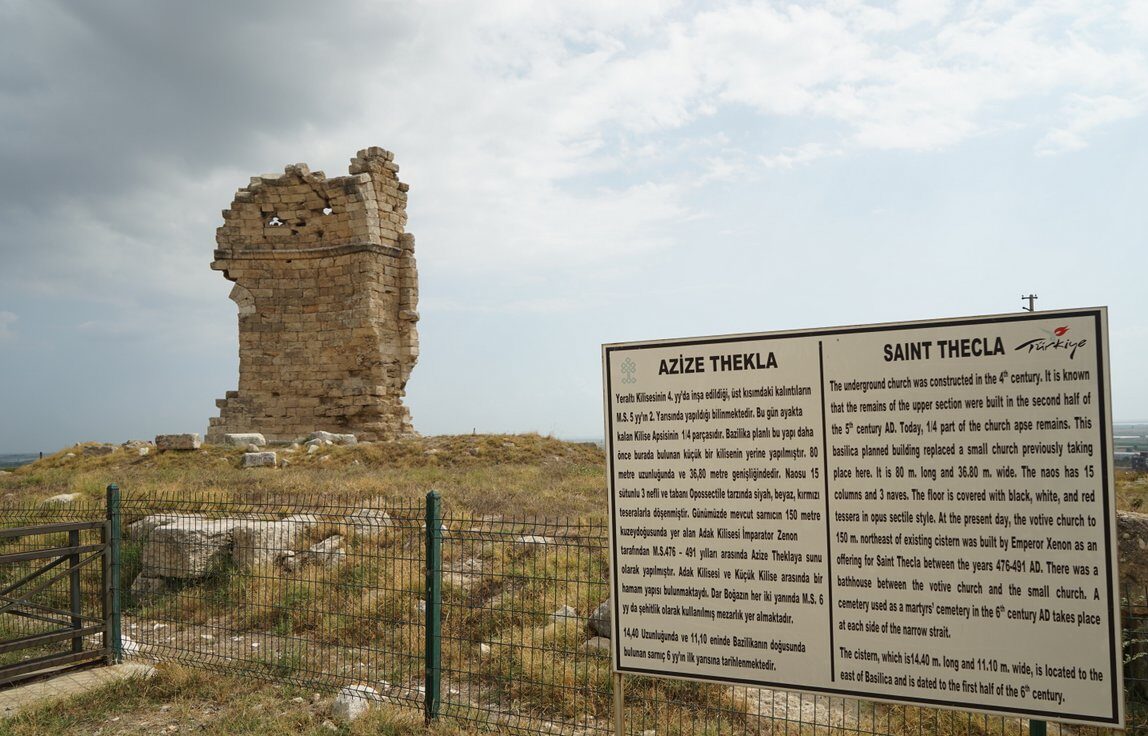
Architectural marvels of the Aya Tekla Site
In addition to the cave church, the site of Aya Tekla boasts several remarkable structures. The Great Thecla Basilica, built atop the cave, once stood as the largest church in the Cilicia region, although today only part of its apse remains.
Other remnants include the Northern Church, Domed Church, baths, cisterns, tombs, and sections of ancient fortifications, all testifying to the significance of this religious site.
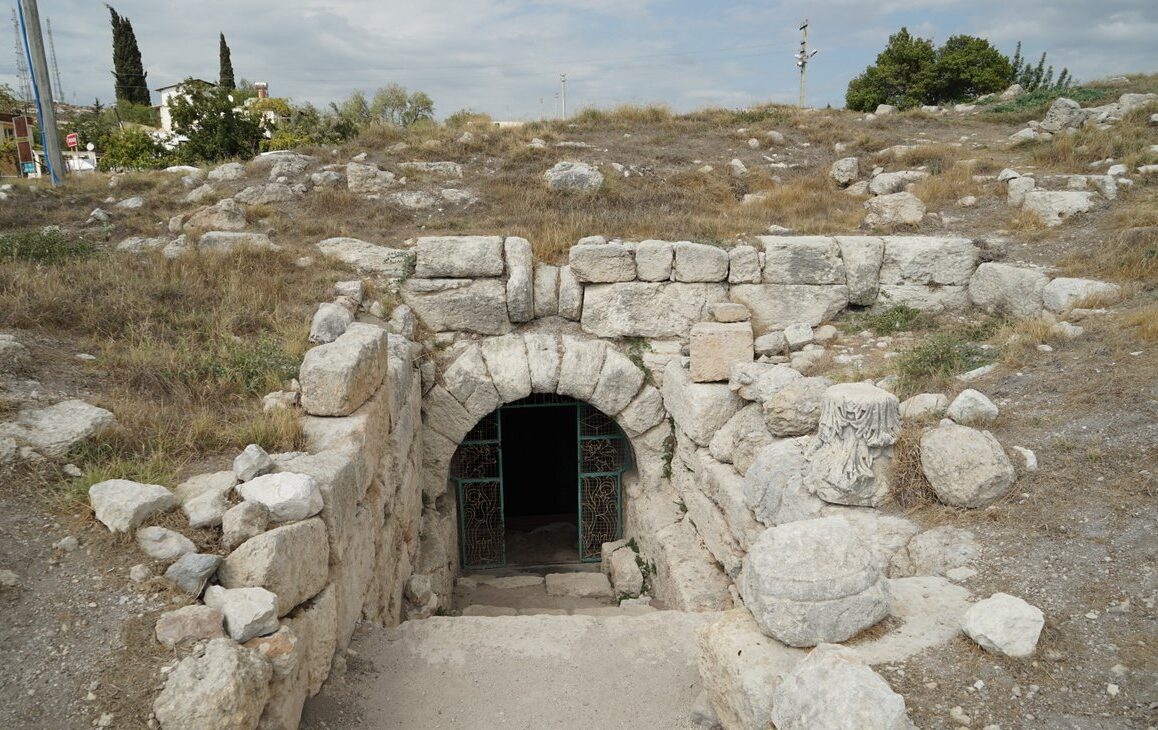
Though now in ruins, the Aya Tekla Cave Church remains under the supervision of Türkiye’s Ministry of Culture and Tourism. Entry is free, and visitors can explore the underground church, accessible via a set of stairs.
While much of the original structure has crumbled, one wall of the three-nave church still stands, offering a glimpse into the past.
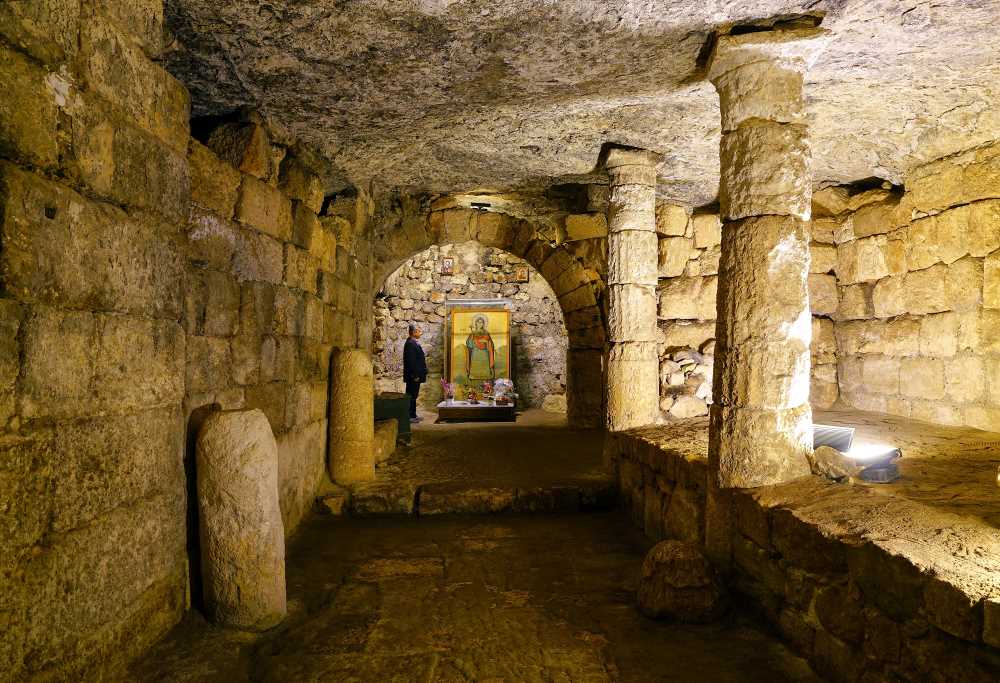
A symbol of miracles of Saint Thecla
Saint Thecla’s story is shrouded in mystery, and the only written account of her life is found in the 2nd-century text The Acts of Paul and Thecla. This text, which was later expanded in the 5th century under the title Vita et Miracula S. Theclae, tells of her trials, including miraculous escapes from death sentences such as being thrown to wild beasts. Although Thecla is recognized as a saint in the Catholic Church and a martyr in the Eastern Orthodox Church, historians question the historical accuracy of her biography, considering it part of the legend.
Despite these debates, Thecla’s popularity spread rapidly, with versions of her story translated into languages such as Coptic, Syriac, Armenian, Geez, Arabic, and Latin. Her cult became particularly strong in the Eastern Christian world, where her memory is celebrated on September 24, while in the Western Church, she is honored on September 23.
Pilgrimage site of Saint Thecla in Silifke
Today, the ruins of Aya Tekla, located just outside Silifke in Mersin Province, remain a pilgrimage destination for those interested in early Christian history. The site, known as Ayatekla, was once a thriving pilgrimage center during Late Antiquity. In addition to the churches, visitors can explore the remains of baths, cisterns, an aqueduct, and several tombs. The site is easily accessible, with buses from Mersin’s central bus station providing transportation to the area, and a short 1-kilometer walk leading to the cave.
Though the Thecla cult gradually faded after the Mamluk and Ottoman periods, the region around her cave, often referred to as “Meryemlik” by locals, continues to hold deep historical and spiritual significance.
Saint Thecla’s legacy, intertwined with miracles, and mystery, remains a testament to the enduring power of faith and the spread of Christianity in the early centuries.
